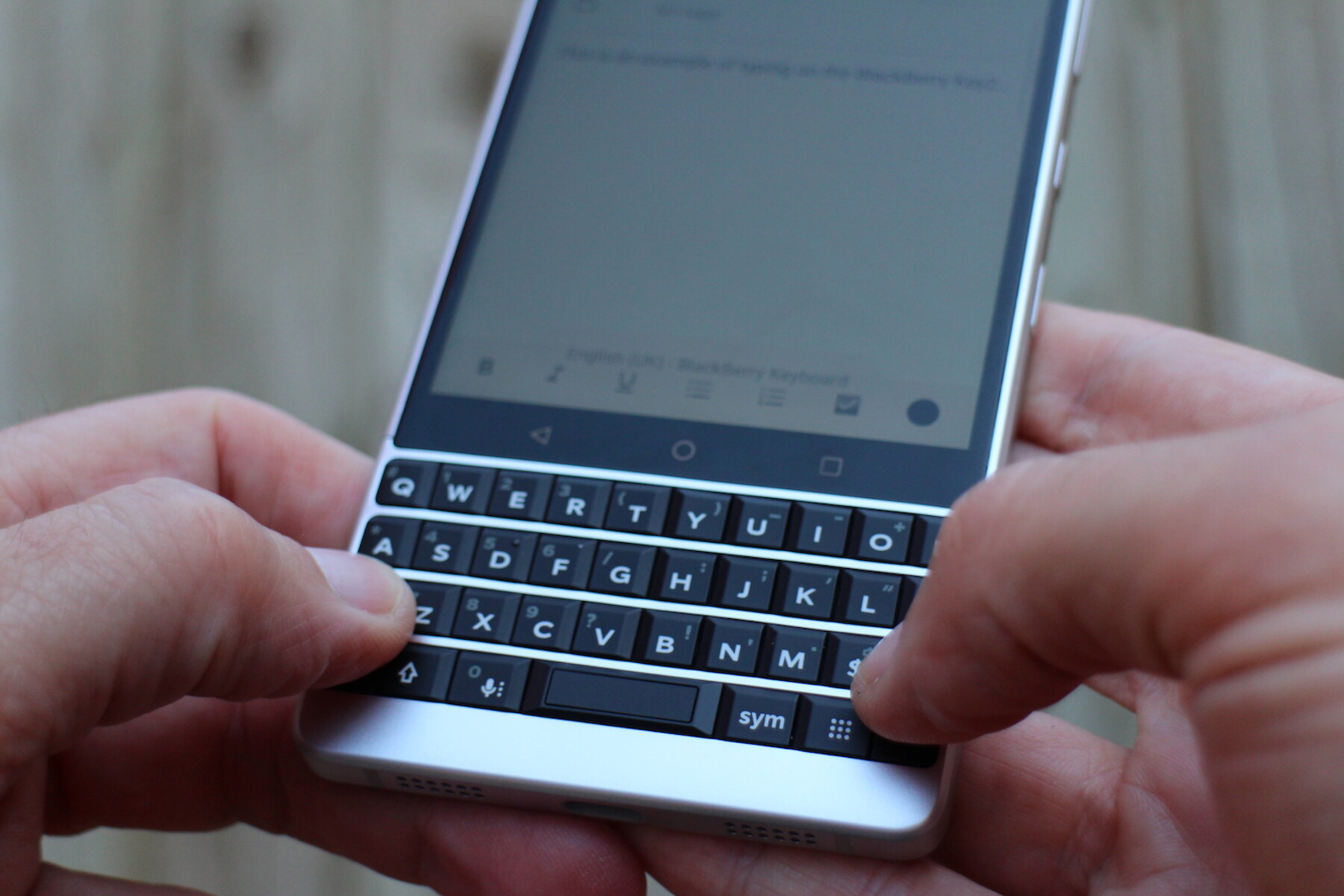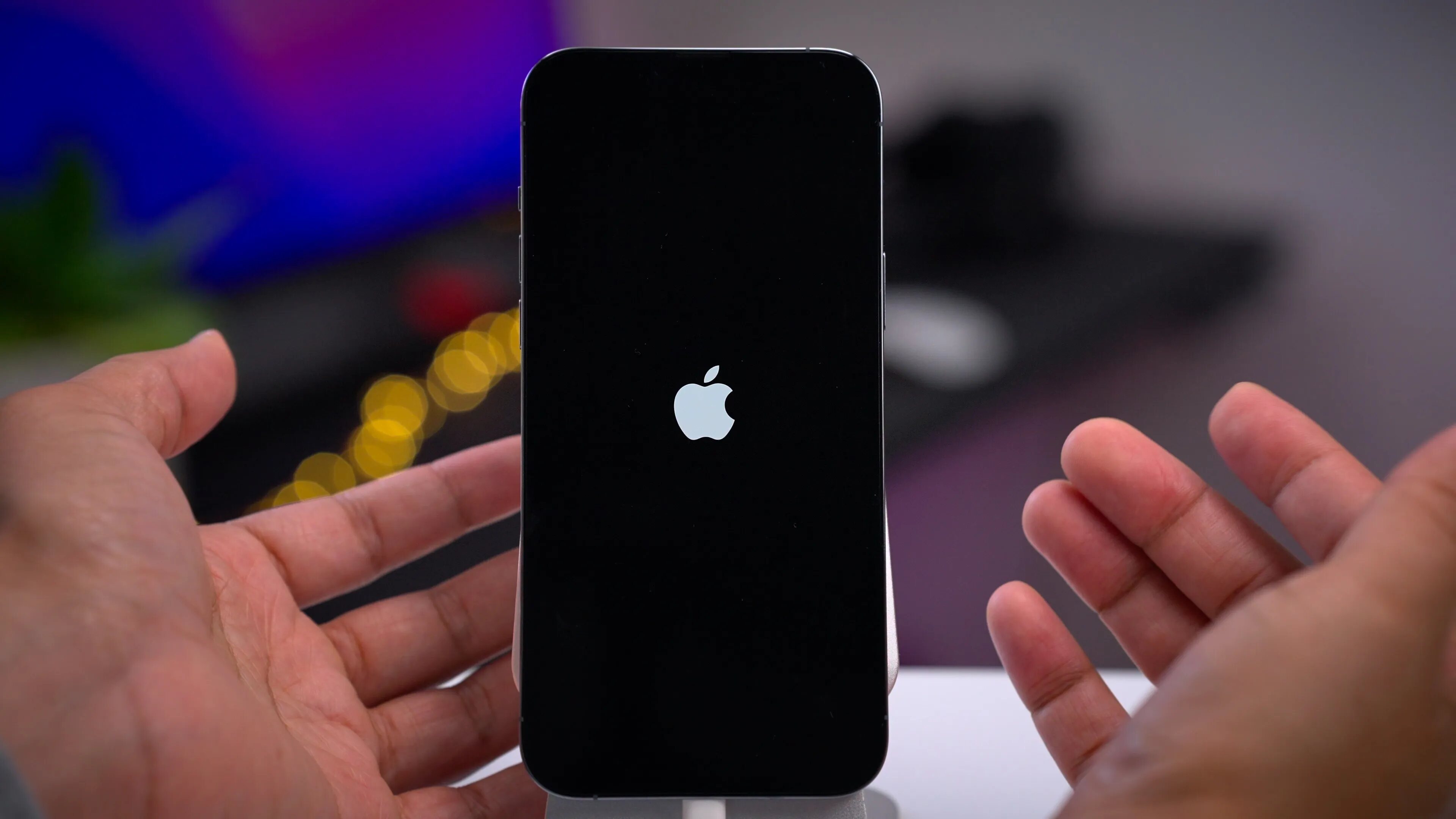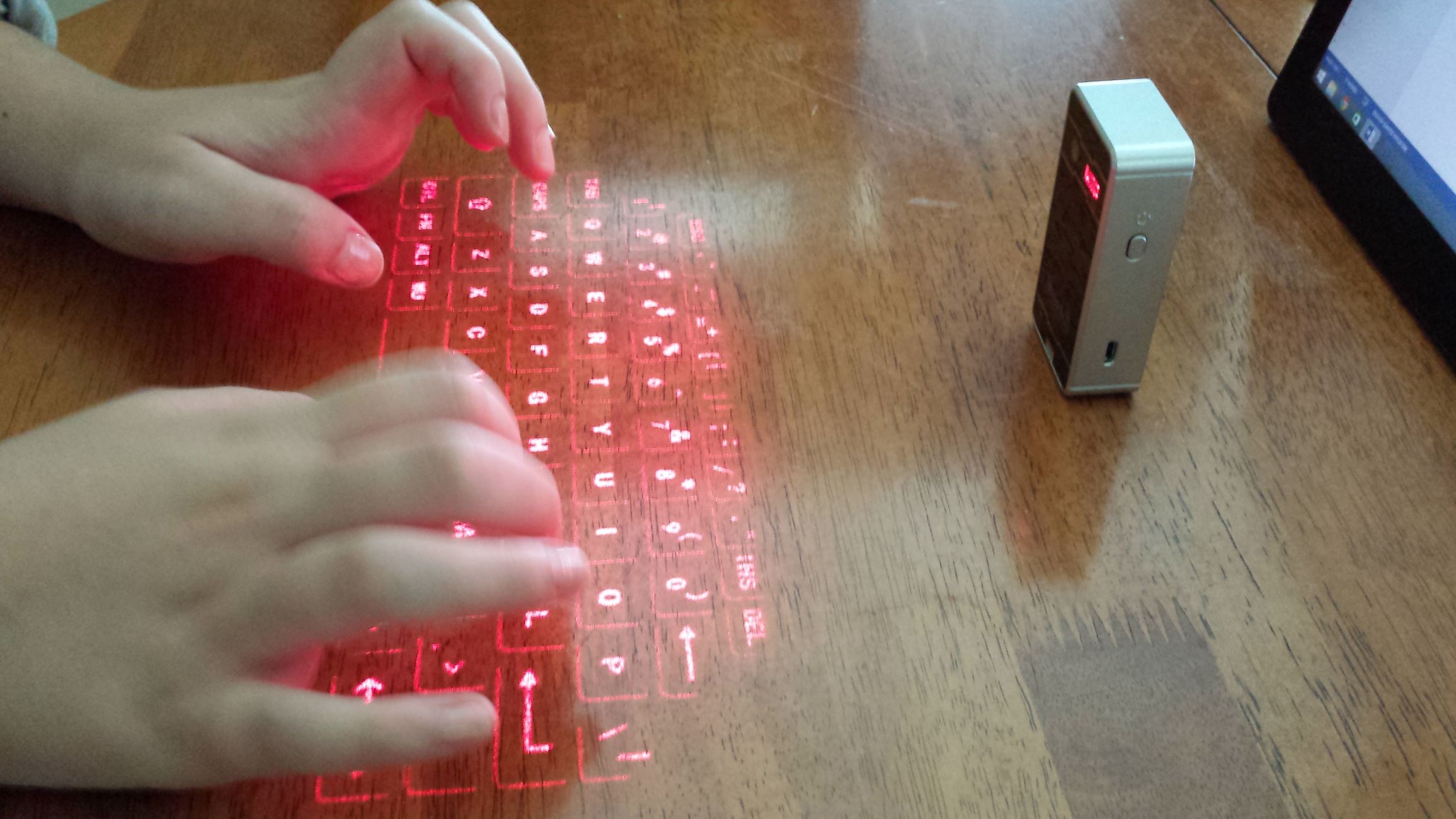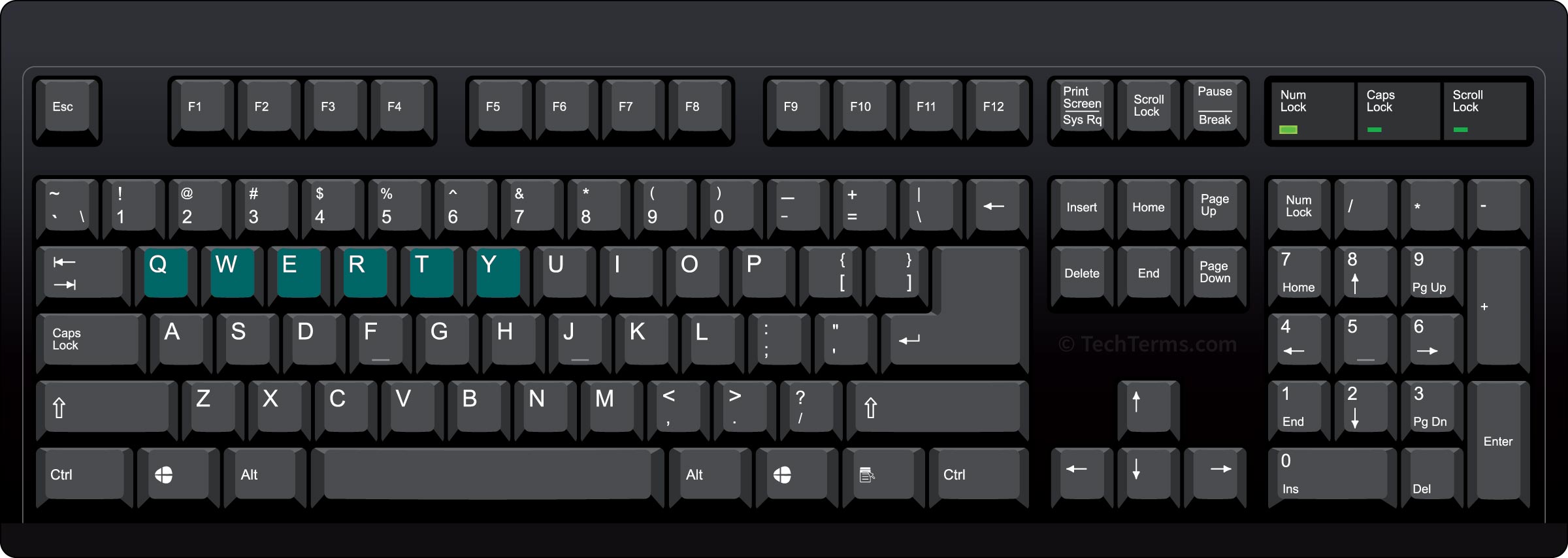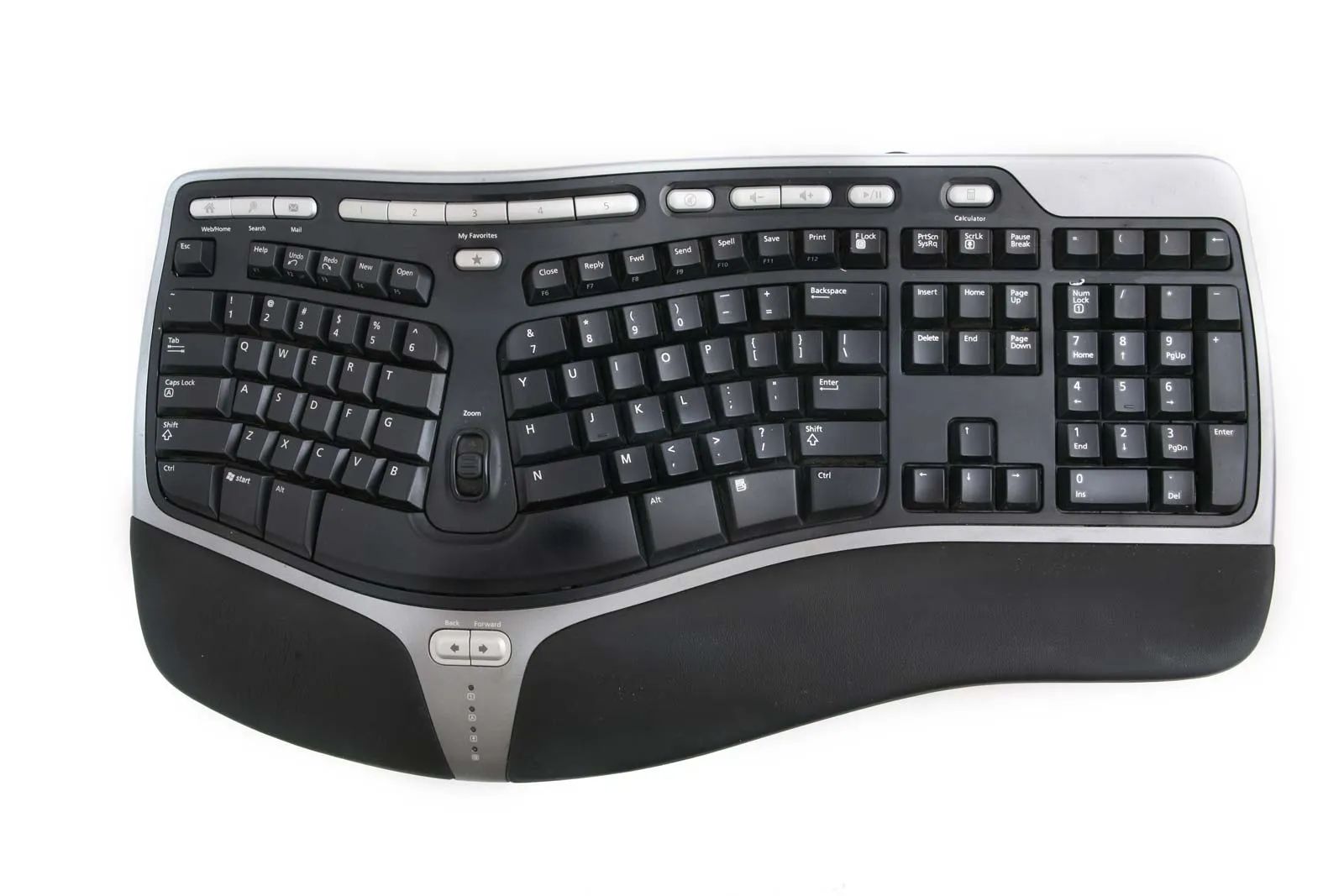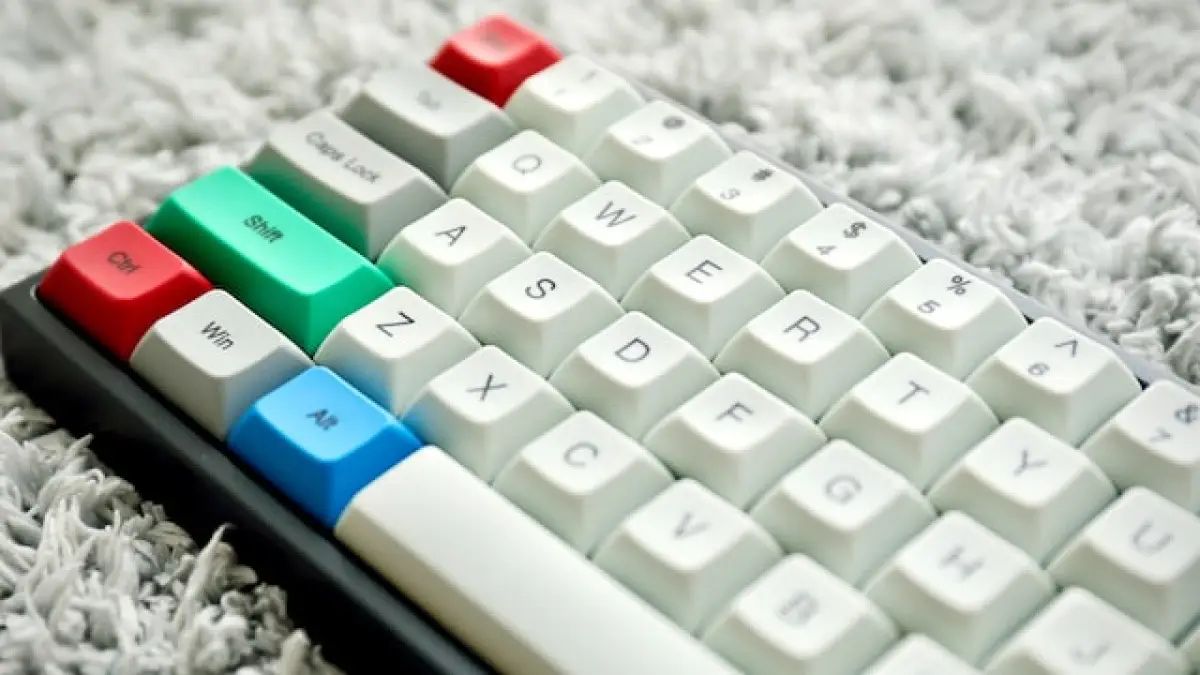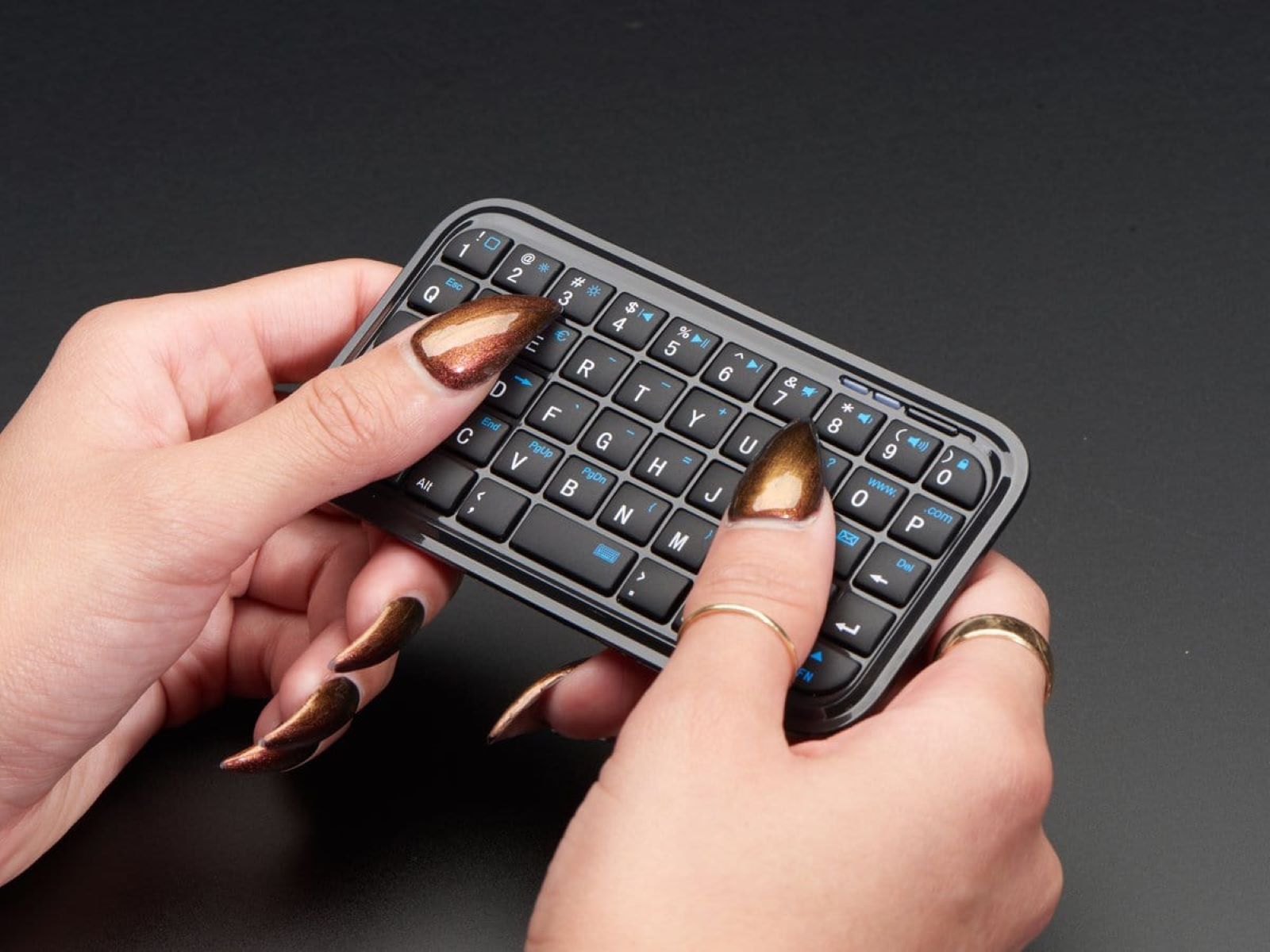Introduction
Welcome to the era of smartphones, where the possibilities seem endless. With a multitude of options available in the market, choosing the perfect smartphone that suits your needs can be a daunting task. Among the various types of smartphones available, the Qwerty smartphone stands out for its unique keyboard design.
Qwerty smartphones have a distinct keyboard layout, inspired by traditional typewriters. The name “Qwerty” is derived from the arrangement of the first six letters on the top row of the keyboard. This keyboard layout has been widely adopted in the world of smartphones, offering users a tactile typing experience.
With the advent of touchscreen keyboards, some may wonder why Qwerty smartphones are still so popular. The answer lies in the familiarity and efficiency it brings to users. For individuals who type extensively on their smartphones, whether it be for work or personal use, having a physical keyboard can significantly enhance productivity and accuracy.
In this article, we will delve into the world of Qwerty smartphones, exploring their history, evolution, factors to consider when choosing one, and the top contenders in the market. We will also compare different Qwerty smartphone models, highlight key features to look for, and discuss the pros and cons of using a Qwerty smartphone.
Whether you are a busy professional, a frequent texter, or a social media enthusiast, choosing the right smartphone can make a world of difference in your daily life. So, sit back, relax, and let us guide you through the fascinating world of Qwerty smartphones, helping you make an informed decision that best suits your needs and preferences.
History of Qwerty Smartphones
The history of Qwerty smartphones dates back to the early days of mobile phones. The first mobile phone with a Qwerty keyboard was introduced by Nokia in 1996, known as the Nokia 9000 Communicator. This device revolutionized the mobile industry by offering users the convenience of a full Qwerty keyboard in addition to basic phone functionality.
Following the success of the Nokia Communicator, various other manufacturers started incorporating Qwerty keyboards into their smartphones. BlackBerry, formerly known as Research In Motion (RIM), played a significant role in popularizing Qwerty smartphones, especially among business professionals. The BlackBerry devices offered a seamless typing experience with their iconic physical keyboards.
Over the years, Qwerty smartphones became more advanced, integrating additional features and technological advancements. As touchscreen technology began to dominate the market, smartphones with virtual Qwerty keyboards emerged, offering users the same experience without the need for physical keys.
While virtual Qwerty keyboards gained popularity, many smartphone users still preferred the tactile feedback of physical keys. This led to the coexistence of both physical and virtual Qwerty keyboards in the market, catering to different user preferences.
As the smartphone industry evolved, manufacturers started focusing on sleek and compact designs, often sacrificing physical keyboards for larger touchscreens. However, there remains a niche market for Qwerty smartphones, especially among professionals and individuals who rely heavily on text input.
In recent years, Qwerty smartphones have seen a resurgence in popularity with the rise of hybrid devices. These devices combine the convenience of a touchscreen with a slide-out or foldable Qwerty keyboard, offering users the best of both worlds.
Overall, the history of Qwerty smartphones showcases the evolution of mobile technology and the user demand for efficient and convenient text input. While the smartphone landscape continues to evolve, Qwerty smartphones continue to carve out their place, satisfying the needs of users who value the tactile typing experience.
Evolution of Qwerty Keyboards
The Qwerty keyboard layout, which originated from typewriters, has undergone significant evolution to adapt to the changing landscape of technology and user needs. Let’s explore the evolution of Qwerty keyboards in smartphones.
In the early days of Qwerty smartphones, physical keyboards were the norm. These keyboards featured raised physical keys that provided users with tactile feedback when typing. Manufacturers like BlackBerry and Nokia were known for their robust Qwerty keyboards that catered to the needs of heavy texters and business professionals.
However, as touchscreen technology gained traction, smartphone manufacturers started to explore alternative ways of incorporating Qwerty keyboards. This led to the development of virtual Qwerty keyboards, eliminating the need for physical keys.
Virtual Qwerty keyboards utilize touchscreen technology to provide users with a digital version of the traditional Qwerty layout. These keyboards offer various advantages, such as the ability to switch between languages, adaptability to different screen sizes, and customization options for layout and functionalities.
With the rise of virtual Qwerty keyboards, smartphone displays became more immersive, allowing for larger screens and slimmer devices. This shift resulted in the removal of physical keyboards from many popular smartphone models in favor of larger touchscreens.
However, there has been a resurgence of physical Qwerty keyboards in recent years, thanks to hybrid devices. These devices feature slide-out or foldable keyboards that remain hidden until needed, providing users with the flexibility to choose between a touchscreen and physical typing experience.
Additionally, advancements in technology have led to improved Qwerty keyboards in terms of key size, key travel, and typing responsiveness. Manufacturers now incorporate features like backlit keys and ergonomic designs to enhance the typing experience and reduce fatigue.
Furthermore, virtual Qwerty keyboards have also seen considerable improvements over time. Today, predictive text algorithms, gesture typing, and haptic feedback technology have made virtual keyboards more intuitive and efficient than ever before.
The evolution of Qwerty keyboards reflects the ever-changing needs and preferences of smartphone users. While physical keyboards may have taken a backseat to touchscreens, the demand for tactile typing experiences has persisted, leading to the innovation of hybrid devices. As technology continues to progress, we can expect Qwerty keyboards to further evolve and adapt to the needs of smartphone users.
Factors to Consider When Choosing a Qwerty Smartphone
When it comes to choosing a Qwerty smartphone, there are several factors to consider to ensure that you select the right device that meets your needs and preferences. Let’s explore these factors.
Keyboard Design: The design and layout of the Qwerty keyboard are crucial considerations. Some keyboards have larger keys, suitable for individuals with bigger fingers, while others may have a compact layout to maximize screen size. Consider your typing style and choose a keyboard design that feels comfortable and easy to use.
Keyboard Quality: The quality of the keyboard is vital for a satisfying typing experience. Look for a smartphone that offers a tactile response, with keys that are easy to press and provide a satisfying amount of feedback. Additionally, a backlit keyboard can be beneficial for typing in low-light conditions.
Operating System: The choice of operating system plays a significant role in the overall user experience. Different operating systems offer unique features and app ecosystems. Ensure that the Qwerty smartphone you choose runs on an operating system that suits your preferences and offers a wide range of compatible apps.
Screen Size: The size of the smartphone’s screen is important, as it affects both the keyboard size and the overall usability of the device. Larger screens may offer a more comfortable typing experience but could result in a bulkier device. Consider your preferences and the trade-offs between screen size and portability.
Performance and Specifications: Look for a Qwerty smartphone with powerful hardware specifications, including a fast processor and ample RAM. This ensures smooth performance, especially when multitasking or running resource-intensive apps. Additionally, consider factors such as storage capacity, battery life, and camera quality based on your specific needs.
Connectivity: Check the connectivity options available on the smartphone. Ensure it supports the latest cellular network technologies for reliable call quality and internet connectivity. Also, consider features like Wi-Fi, Bluetooth, and NFC, which can enhance your overall smartphone experience.
Price and Value for Money: Set a budget and compare prices among different Qwerty smartphones. While high-end devices may offer advanced features, they may also come with a higher price tag. Consider the overall value for money, weighing the features, performance, and durability of the smartphone against its price.
User Reviews and Ratings: Before making a final decision, read user reviews and ratings of the Qwerty smartphone you’re interested in. Real-world experiences can provide insights into its performance, build quality, and any potential issues to be aware of.
By considering these factors, you can make an informed decision and choose a Qwerty smartphone that matches your typing needs, preferences, and overall smartphone requirements.
Top Contenders in the Market
With the wide array of Qwerty smartphones available in the market, it can be challenging to determine which devices are the top contenders. However, several models stand out for their impressive features and user satisfaction. Let’s explore some of the top contenders in the Qwerty smartphone market.
BlackBerry KEY2: The BlackBerry KEY2 is a remarkable Qwerty smartphone that combines a sleek design with a tactile keyboard. It features a spacious keyboard with excellent key travel and fingerprint sensor integration. The KEY2 also offers powerful performance, a long-lasting battery, and enhanced security features, making it a favorite among business professionals.
Samsung Galaxy XCover Pro: Though primarily marketed as a rugged smartphone, the Samsung Galaxy XCover Pro boasts a built-in Qwerty keyboard that is ideal for users who value durability and physical typing. With its water and dust resistance capabilities, it is well-suited for outdoor environments. The XCover Pro also offers a large display, decent performance, and a removable battery, setting it apart from other options.
Nokia 2720 Flip: For those seeking a compact Qwerty smartphone, the Nokia 2720 Flip offers a unique form factor with a foldable design. A mini Qwerty keyboard is hidden beneath the flip cover, making it convenient for quick messaging and calls. The 2720 Flip also includes essential features like an external display, decent battery life, and a simplified user interface.
Moto G Stylus: While not a traditional Qwerty smartphone, the Moto G Stylus stands out for its included stylus and virtual keyboard. The stylus allows for precision input, making it an attractive option for those who prefer a digital writing experience. The G Stylus also offers a large display, capable performance, and a versatile camera system, making it a strong contender in the mid-range smartphone market.
BlackBerry KEYone: The BlackBerry KEYone is a favorite among Qwerty enthusiasts who value a physical keyboard. It features a spacious keyboard with an integrated fingerprint sensor and capacitive touch navigation keys. The KEYone also offers good battery life, solid performance, and enhanced security features, making it a reliable choice for productivity-focused individuals.
These are just a few examples of the top contenders in the Qwerty smartphone market. It’s important to explore various models, compare their features, and consider your specific needs before making a decision. Ultimately, the best Qwerty smartphone for you will depend on your personal preferences, typing requirements, and overall smartphone expectations.
Comparison of Qwerty Smartphone Models
When choosing a Qwerty smartphone, it’s crucial to compare different models to find the one that best suits your needs. Let’s compare several popular Qwerty smartphone models to help you make an informed decision.
BlackBerry KEY2 vs. Samsung Galaxy XCover Pro: The BlackBerry KEY2 offers a traditional physical Qwerty keyboard, while the Samsung Galaxy XCover Pro combines a touchscreen with a built-in Qwerty keyboard. The KEY2 is ideal for those who prefer a tactile typing experience, while the XCover Pro is suitable for users who require a rugged device for outdoor use.
Nokia 2720 Flip vs. Moto G Stylus: The Nokia 2720 Flip features a compact foldable design with a mini Qwerty keyboard beneath the flip cover. In contrast, the Moto G Stylus offers a virtual keyboard and an included stylus for precise input. The 2720 Flip appeals to those seeking simplicity and convenience, while the G Stylus suits individuals who value digital writing capabilities.
BlackBerry KEYone vs. BlackBerry KEY2: Comparing BlackBerry devices, the KEYone features a physical Qwerty keyboard with capacitive touch navigation keys, while the KEY2 offers an upgraded keyboard with an integrated fingerprint sensor. Both models boast enhanced security features and solid performance, making them suitable for productivity-focused users.
Samsung Galaxy XCover Pro vs. Moto G Stylus: The Samsung Galaxy XCover Pro is a rugged device with a built-in Qwerty keyboard, while the Moto G Stylus offers a virtual keyboard and a stylus for precision. The XCover Pro excels in durability, making it advantageous for outdoor environments, while the G Stylus provides versatility with its stylus and camera capabilities.
When comparing these Qwerty smartphone models, consider factors like keyboard type, durability, performance, additional features, and price. Think about your specific needs and determine which features are most important to you. Do you prefer a physical keyboard or a virtual one? Are you primarily concerned with ruggedness or stylus functionality?
By taking the time to compare these models, you can find the Qwerty smartphone that perfectly aligns with your preferences and requirements. Remember, the best choice will ultimately depend on your personal needs and how well each model matches them.
Key Features to Look for in a Qwerty Smartphone
When searching for the perfect Qwerty smartphone, there are several key features that you should consider. These features can greatly impact your overall user experience and productivity. Let’s explore the important factors to look for in a Qwerty smartphone.
Keyboard Quality: The quality of the Qwerty keyboard is paramount. Look for a smartphone with well-spaced and responsive keys that offer comfortable typing. A backlit keyboard can also be beneficial for typing in low-light conditions.
Operating System: The operating system of a Qwerty smartphone determines its user interface and app compatibility. Consider popular operating systems like Android or iOS, which offer a wide range of apps and a user-friendly experience.
Display: The size and quality of the display have a significant impact on your smartphone experience. A larger display allows for a more spacious keyboard, but it may also result in a bulkier device. Look for a Qwerty smartphone with a high-resolution display and good color reproduction.
Performance: A powerful processor and sufficient RAM are essential for smooth multitasking and seamless operation. Ensure that the Qwerty smartphone has enough processing power to handle your daily tasks, such as emailing, web browsing, and running productivity apps.
Battery Life: Long battery life is crucial for a device that you’ll be using extensively throughout the day. Look for a Qwerty smartphone with a large battery capacity that can last through a typical workday without needing frequent charges.
Connectivity: Consider the connectivity options available on the Qwerty smartphone. Look for features like Wi-Fi, Bluetooth, and NFC for seamless connectivity with other devices and accessories. Ensure that the phone supports the latest cellular network technologies for fast and reliable connections.
Camera: If photography is important to you, consider the camera capabilities of the Qwerty smartphone. Look for a device with a high-resolution camera sensor, optical image stabilization, and advanced camera features to capture high-quality photos and videos.
Storage: Adequate storage capacity is important for storing apps, photos, videos, and other files. Look for a Qwerty smartphone that offers expandable storage options like microSD card slots or ample internal storage for your needs.
Security: Security features are increasingly important in today’s digital world. Look for a Qwerty smartphone that offers features like fingerprint sensors or facial recognition for secure and convenient unlocking of your device.
By considering these key features, you can narrow down your options and find the Qwerty smartphone that aligns with your typing needs and overall smartphone requirements. Don’t forget to prioritize the features that are most important to you to ensure a satisfying user experience.
Pros and Cons of Using a Qwerty Smartphone
Using a Qwerty smartphone offers several advantages and disadvantages. It’s important to consider these pros and cons to determine if a Qwerty smartphone is the right choice for you. Let’s explore the benefits and drawbacks of using a Qwerty smartphone.
Pros:
1. Tactile Typing: One of the biggest advantages of a Qwerty smartphone is the physical keyboard, which offers a tactile typing experience. This can result in faster and more accurate typing, especially for those who do a lot of text input or need to type with precision.
2. Enhanced Productivity: The physical Qwerty keyboard allows for efficient typing, making it ideal for individuals who rely heavily on their smartphones for work-related tasks. Writing emails, documents, or even lengthy texts becomes easier and more efficient with a dedicated keyboard.
3. Reduced Screen Clutter: With a Qwerty keyboard, you no longer need to sacrifice screen real estate for an on-screen keyboard. This means more room to view and interact with content, whether it’s reading articles, browsing websites, or watching videos.
4. Accurate Text Selection: The physical keys on a Qwerty smartphone can make text selection, such as highlighting or editing, more precise. This can be particularly useful when working with documents, spreadsheets, or text-heavy applications.
Cons:
1. Reduced Screen Size: The presence of a physical Qwerty keyboard means sacrificing some screen space. This can make the overall device larger and less compact, which may be a drawback for users who prioritize portability and a larger display.
2. Limited Language Support: Physical keyboards on Qwerty smartphones are usually designed for specific language layouts. Switching between languages may require additional settings or custom keyboards. Virtual keyboards, on the other hand, offer more flexibility in language support.
3. Learning Curve: If you are accustomed to using a touchscreen keyboard or have never used a Qwerty keyboard before, there may be a learning curve associated with adjusting to the physical keys. It may take some time to become comfortable and proficient in typing on a Qwerty keyboard.
4. Decreased Customizability: Qwerty keyboards on smartphones typically have a fixed layout, limiting the ability to customize key placements or functions. Virtual keyboards, on the other hand, often offer more flexibility in terms of customization and personalization.
Ultimately, the decision to use a Qwerty smartphone boils down to personal preference and individual needs. Consider the pros and cons outlined above and prioritize the factors that matter most to you in order to make an informed choice.
Conclusion
Choosing a Qwerty smartphone requires careful consideration of various factors. The history and evolution of Qwerty keyboards in smartphones highlight their lasting appeal and the demand for tactile typing experiences.
When selecting a Qwerty smartphone, it’s important to evaluate the keyboard design and quality, operating system, display size, performance, battery life, connectivity options, camera capabilities, storage capacity, and security features.
While Qwerty smartphones offer numerous advantages, such as tactile typing, enhanced productivity, reduced screen clutter, and accurate text selection, they also have some drawbacks, including reduced screen size, limited language support, a learning curve, and decreased customizability.
It’s crucial to weigh the pros and cons to determine if a Qwerty smartphone aligns with your typing needs, productivity requirements, and personal preferences.
Ultimately, the best Qwerty smartphone for you will depend on your individual needs and preferences. Consider the factors discussed in this article and compare different models to find the perfect Qwerty smartphone that suits your typing style, enhances your productivity, and meets your overall smartphone expectations.
With the right Qwerty smartphone in your hands, you can experience the joy of effortless typing and seamless communication, enabling you to make the most of your digital world.







